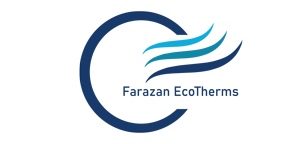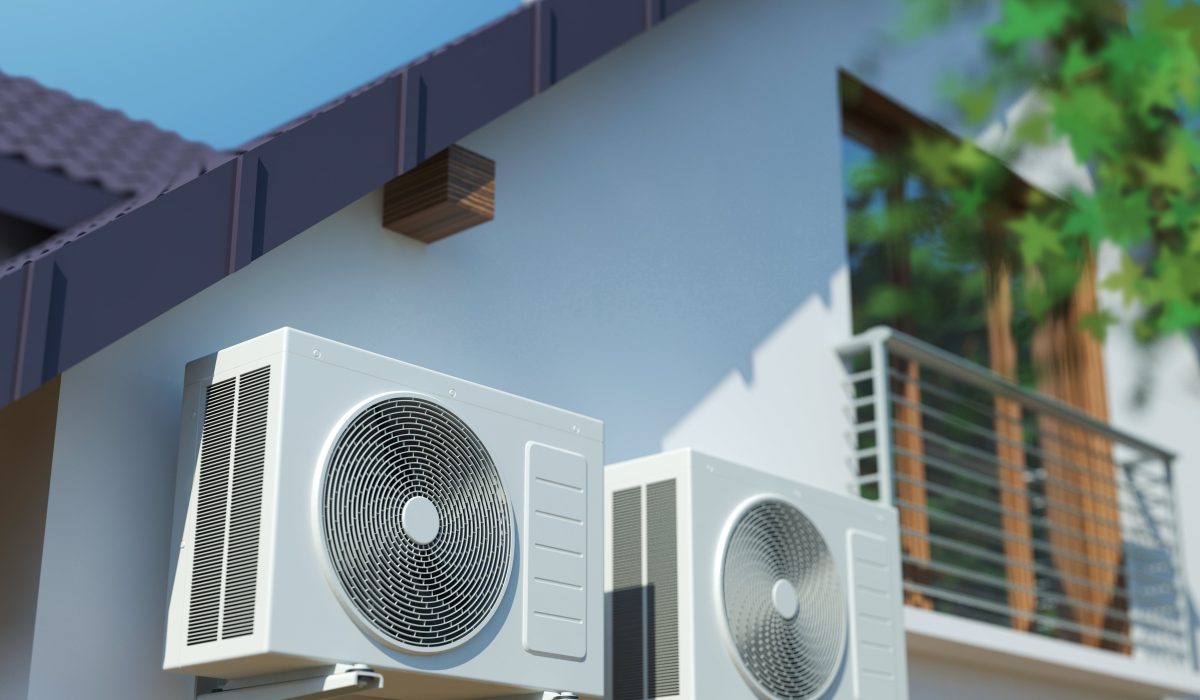Select an energy efficient heating & cooling system
Reducing the energy required for heating and cooling is essential to meeting the net zero goal. An air-source heat pump is the most energy efficient heating and cooling system currently available. It takes heat out of the air, even when temperatures fall below zero, and moves it as hot refrigerant through a small pipe to one or more indoor units that deliver heat into the house. In the summer, an air-source heat pump removes heat from the home, even when temperatures are above 100˚F, and delivers cold air to the indoors.
Mini-split heat pumps
Air-source mini-split heat pumps are highly efficient. Compared to large central air handlers, they can be sized more appropriately for homes with very low heating and cooling requirements, which makes them a good match for many zero energy homes. In addition to saving energy, they cost less to install, are usually ductless, and create only two small penetrations in the building shell.
Energy efficiency
Choose a highly efficient model with a heating season performance factor (HSPF) rating of 10.5 or higher and a seasonal energy efficiency rating (SEER) in the mid to high 20s. There are many mini-splits on the market that meet this target. If you’re building in a colder climate, be sure to select a model that will perform well down to -10° F and that they are sized correctly for the specific heating and cooling needs of the home.
Mini-splits owe much of their efficiency to variable speed operation. They run very slowly when the heating need is low and then speed up when the need is high, resulting in very stable room temperatures. Most conventional heating systems (including furnaces, central heat pumps and hydronic systems) can operate at only one level and turn on and off in an attempt to keep the living space at a constant temperature.
Distribution
Mini-splits deliver heat or cold, depending on the season, to an indoor unit that usually hangs on a wall or can be recessed into a ceiling. In a smaller home with a more open floor plan, only one or two indoor units may be needed to distribute heat or cold to the entire house. In larger homes, where heating and cooling diverse spaces are necessary, a multi-zone system with a single outdoor unit connected to two or more indoor units may be appropriate. While most mini-split systems are ductless, a ducted system is also available that uses relatively small, short ducts to reach different rooms or may share ducting with the ventilation system. Since warm air rises and cool air falls, there will be a special challenge with two-story homes. A multi-zone mini-split allows one unit to be installed upstairs and one downstairs to cover both heating and cooling needs more effectively.
Cold climates
In cold climates, be sure to select a cold climate rated heat pump. They work well even when the temperatures are -10°F, provided they are sized properly. In very cold climates a simple backup heating system, such as one or more electric resistance wall heaters, can be installed in the bathrooms or areas not well served by the mini-splits. These heaters will be used rarely or not at all, but they provide inexpensive insurance in case of extreme weather or heat pump failure.
Warm climates
Some of mini-splits cool much more efficiently and are more quiet than standard air conditioners. That makes them especially suitable for warmer climates.
Proper sizing
To properly size an energy-efficient heating and cooling system, several factors need to be considered, including the size and layout of the building, the climate in the region, the level of insulation in the walls and roof, and the number and type of windows. A professional HVAC (Heating, Ventilation, and Air Conditioning) contractor can perform a load calculation to determine the heating and cooling requirements for the building based on these factors. This calculation takes into account the building’s heat gain and heat loss, which is affected by factors such as the number of occupants, the number of appliances, and the level of air infiltration. By properly sizing the system, you can ensure that it operates efficiently, saving energy and reducing your utility bills.
The lowest expected outdoor temperature is called the “design temperature” of the building. Conventional heating and cooling equipment are commonly sized for this worst-case temperature. There are usually only a few hours of the year that reach the design temperature and therefore require full capacity. Recent research has shown that it’s important not to oversize a mini-split system, as is commonly done with other types of heating equipment. Oversizing can lead to excessive “cycling” when the system turns on and off much too frequently. This happens when the outdoor winter temperature is warmer and the equipment capacity is too great. The thermostat is rapidly satisfied, and the unit shuts off, only to come on again very soon. Excessive cycling will reduce operating efficiency and shorten equipment life. Within normal temperature ranges, properly sized equipment will run for longer periods at slower speeds providing for more even temperatures and more efficient operation.
It’s okay to match the mini-split size to the expected design heat load without over-sizing for additional capacity. Small electric heaters can be installed as backup heat for the mini-split on rare days of unusually extreme cold or in case of emergency.

